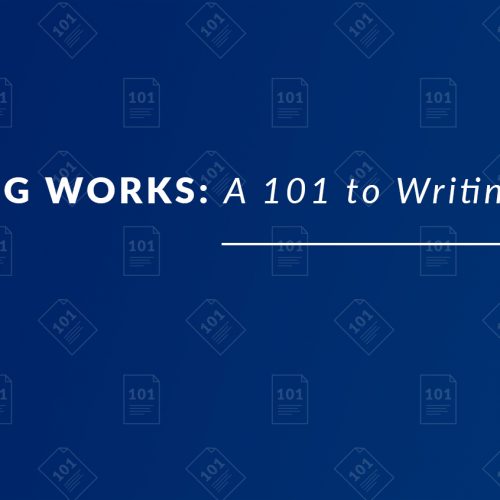What Is Direct Response Copywriting?
Direct response copywriting is the antithesis of the ad copywriting you see on TV. Those TV copywriters are focused on a long-term game. They want you to remember their product if or when you see it on supermarket shelves. In contrast, direct-response copywriting focuses on the immediate moment. This is copy that’s about inspiring the buyer to take action as soon as they’re finished reading. It can be an important tool to improve conversion rates on landing pages, blogs, and other types of content. With direct response copywriting, you’re trying to get them to complete an action like: Making a purchase Signing up for your newsletter Downloading a freebie Following you on social media To do this, you must craft copy that tugs at your reader’s emotions and, most importantly, addresses their worries, fears, pain points, or immediate needs. The Art of Deeply Understanding Your Reader Renowned copywriter David Ogilvy is perhaps the best-known direct response copywriter. In fact, he is frequently called the father of modern advertising. Ogilvy headed up incredibly successful and memorable campaigns for some of the top brands in the 1950s and ‘60s, including American Express, Rolls Royce, Hathaway, Shell, Dove, and others. Ogilvy understood that the most effective direct response copy isn’t just directed at your target audience – it speaks to them on a personal level. The combination of this deep understanding and direct, personal approach is the engine that runs this form of copywriting. X Direct Response Copywriting Takeaways from Real-World Examples How do you write great direct response copy? There are a few key principles you must follow: Write a powerful, compelling headline Use long-form copy Add an irresistible CTA Stay customer focused Follow K.I.S.S. principles Cultivate a sense of urgency To understand these principles better, we will look at a handful of real-world examples 1. A Great Headline Snags Your Readers The first and most important principle of direct response copywriting is to craft a powerful, compelling headline. Your headline should snag your reader’s attention and entice them to keep reading. A recent study by Microsoft showed that the average human attention span has dropped to just 8 seconds. With such limited time, crafting the perfect headline is even more important. The right headline sparks their interest and encourages them to continue reading, helping you overcome that 8-second barrier. Here is a classic example from none other than David Ogilvy: “At 60 miles an hour, the loudest noise in this new Rolls-Royce comes from the electric clock.” Ogilvy described this headline as the best he ever wrote. This headline was so effective, other world-class companies like Shell specifically requested Ogilvy for their campaigns and wouldn’t settle until he agreed. They refused to even consider another copywriter. Why is this headline so effective? It follows the proven headline formula: The benefit is cleverly hidden within the headline. It’s not stated but implied. When you’re driving 60 mph on the highway in this car, it’s so quiet, you’ll only hear the clock. It’s simple and to the point. It doesn’t use any hyperbole or fluff to pad it out. It only states facts. It states something exciting and provocative. When this ad came out, most cars had loud and obnoxious engines. Readers might think, “I would love to enjoy a quiet highway drive.” It’s useful information. For anyone looking to buy a new car like this, the headline offers helpful information – it’s quiet. It sparks curiosity. The headline makes the reader want to learn more. What kind of car is this? How can it be so quiet? What else can it do? Headlines are crucial because they convince someone to read everything else. You must write a headline that makes readers want to know more. This is the keystone of writing direct response copy. 2. Long-Form Copy Informs, Persuades, and Convinces Most direct response copywriting is long form. Why is this? To be more persuasive, you need to give the reader a lot of information. It is easier to convince someone to buy something with an entire page’s worth of information than a couple of sentences. To quote Davie Ogilvy again, “The more you tell, the more you sell.” The more information you can give your reader, the more likely they will want to follow up on the desired action. For a good example, let’s look at this sales page for Adobe Photoshop: It starts out with a solid headline – Everyone can. Photoshop. This plays on the prevalence of Photoshop in today’s world. The brand name has practically turned into a verb. Along with the headline, there is some compelling introductory copy and an eye-catching animation. Keep scrolling down the page, and you’ll see real-world examples of how professionals use Photoshop today to make their visuals more powerful. Near the middle of the page, Adobe offers a captivating CTA in the form of a quiz. The page continues with a how-to section with links to learn more, highlights of the latest new features and improvements, and then a selection of frequently asked questions. There’s a lot of copy of this page, but it’s all useful, informative, and persuasive. It helps you make that purchase decision. Most importantly, it keeps you scrolling, learning about each feature, and then entices you to click “Buy now.” If the only copy on this page was the first paragraph, it becomes a lot less convincing. There isn’t enough information to help you decide if you want to buy the product. Beyond this visual example, there is data to back up the case for long-form copy. Conversion Rate Experts ran a case study for Crazy Egg that compared a short vs. long landing page. In the case study, they compared the original “control” landing page to a new page nearly 20 times longer. They ran an A/B split test to gauge which page had a higher conversion rate. The results: the long-form content outperformed the short page by 30%. These results make sense. With more … Read more








